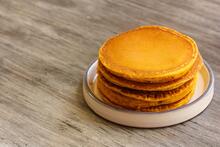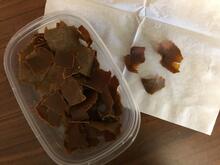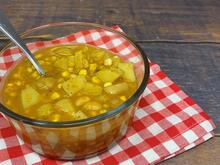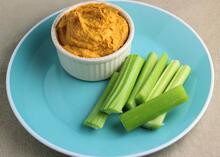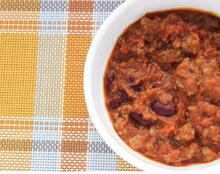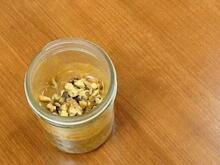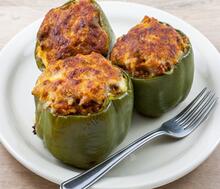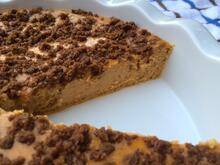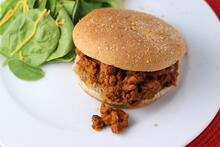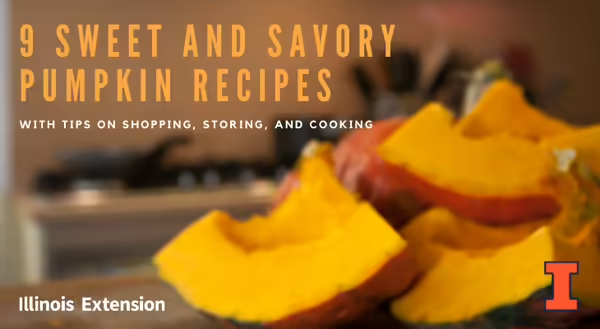
Fun fact I think many people have started to learn over the years: the cans of pumpkin puree on grocery store shelves are from "processing pumpkins" or "canning pumpkins," while the pumpkins we decorate with and carve are "ornamental pumpkins."
Fun fact number two: Illinois is a top state for processing of edible pumpkins. Curious about how pumpkin farming impacts Illinois? Check out this article from the Illinois Farm Bureau.
Fun fact number three: Illinois Extension hosts the "Pumpkins and More" website, with information on growing pumpkins (including giant pumpkins!), a list of pumpkin farms to visit, and directions on getting pumpkin puree from edible pumpkins.
Nutritionally, 1/2 cup pureed pumpkin has around 40 calories, 10g carbohydrate, 3g fiber, and is a source of vitamins and minerals, including vitamin C, vitamin A, folate, and potassium. Pumpkin is not a significant source of fat, protein, or sodium.
- Buy: When it comes to canned pumpkin, check which style you are buying. Pumpkin puree is not the same as pumpkin pie mix or pumpkin pie filling.
- Growing: Want to grow your own edible pumpkins at home? Find a list of Recommended Varieties on the "Watch Your Garden Grow" pumpkin page from Illinois Extension.
- Price: Canned pumpkin averages $0.75 per cup, according to the U.S. Department of Agriculture.
- Store: Keep unopened canned pumpkin in a cool, dry and dark location, like a pantry.
- Prepare: Canned pumpkin is ready to use straight from the can. Once the can is opened, move any extra pumpkin to a covered container and refrigerate within 2 hours. Use within 7 days or freeze for longer storage.
- Preserve: If preparing your own fresh pumpkin for canning, be aware that the National Center for Home Food Preservation currently recommends only canning CUBED pumpkin, not pureed.
- Eat: Pumpkin is popular in desserts, baked goods, and drinks, and also provides rich flavors in savory recipes too. Below are nine recipes using pumpkin, so no more excuses for only using part of that can of pumpkin!
Pumpkin Pancakes | Print recipe
Pumpkin Leather | Print recipe
Recipe from National Center for Home Food Preservation
Photo by Caitlin Mellendorf, MS, RD
Pumpkin Chicken Chowder | Print recipe
Electric Pressure Cooker recipe
Peanut Butter Pumpkin Dip | Print recipe | Video
Pumpkin Chili | Print recipe
Pumpkin Pie Overnight Oats | Print recipe | Video
Pumpkin Stuffed Peppers | Print recipe
Upside Down Pumpkin Cheesecake | Print recipe
Sweet Pumpkin Sandwiches | Print recipe
Post originally published in 2020; content updated in 2021.
Healthy Eats and Repeat
How much difference is there between canned and frozen foods? How should you cook venison? When is the best time to buy avocados? Get answers to these questions as well as other tips, tutorials and recipes for common kitchen foods and items with University of Illinois Extension Nutrition & Wellness Educator Caitlin Mellendorf’s blog Healthy Eats and Repeat. Build your best life. Trust Extension to help.
Caitlin Mellendorf is an Illinois Extension Nutrition and Wellness Educator serving DeWitt, Macon and Piatt Counties in Central Illinois. She is a Registered Dietitian and her work focuses on helping community members gain the knowledge, skills and tools to live healthier, more nutritious lifestyles. This includes providing programs and answering questions about heart health, diabetes, food safety, food preservation, grocery shopping and cooking. You can reach Caitlin by email at chuth2@illinois.edu or call 217.877.6042. Check out her nutrition blog Healthy Eats and Repeats for seasonal recipes and of an exploration of common kitchen foods.
